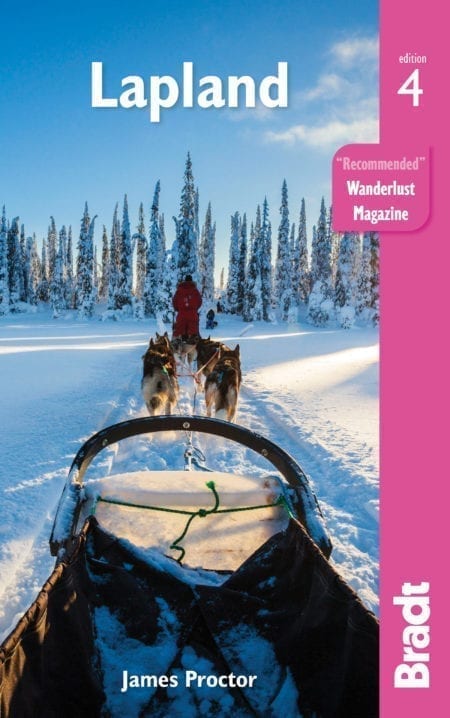It’s the most common question when the subject of Lapland pops up in conversation: ‘where’s best to see the northern lights?’ Annoyingly, there’s no definitive answer – in large part, the choice of where to go to see the aurora depends on what else you want from your Lapland holiday.
With the popularity of Lapland as both a winter and summer destination having increased exponentially over the past decade, you’ll find activities operators offering snowmobile tours or husky safaris to hunt for the northern lights throughout the region. You don’t need to be on a husky sled or a snowmobile to see the lights – it’s simply a way of creating an experience around the adventure. What’s much more important is the weather. The aurora can’t be seen on cloudy nights so, remember, that, statistically, the longer you stay in Lapland the greater the chance of spotting the lights – no matter where you are. You’ll find a reliable forecast of northern lights activity here.
It is said that the colder and stiller the conditions the better the chances of a display, and the further north you travel the more impressive the lights will be. If you’re flying to Lapland during the hours of darkness, be alert as you look out of the plane windows because the aurora borealis can also be seen clearly when you are in the air above the cloud.
Despite its increase in popularity, Lapland remains an niche destination ideal for travellers hoping to get off the beaten track. Of course, during the winter months, a small handful of places are inundated with planeloads of visitors seeking Santa Claus or a close-up of the northern lights (the best of which are detailed below). But this area of northern Scandinavia is so vast that a short sidestep will soon take you to places untouched by tourism making a trip to the region entirely worthwhile, even if you don’t catch a glimpse of those iconic green hues.
Norway
Tromsø
Tromsø is a good choice for those seeking out the northern lights; it’s accessible (there are direct flights from London), the average winter temperature is only around –4 ̊C and clear skies are relatively common (the surrounding mountains help keep the sky cloud-free in winter).
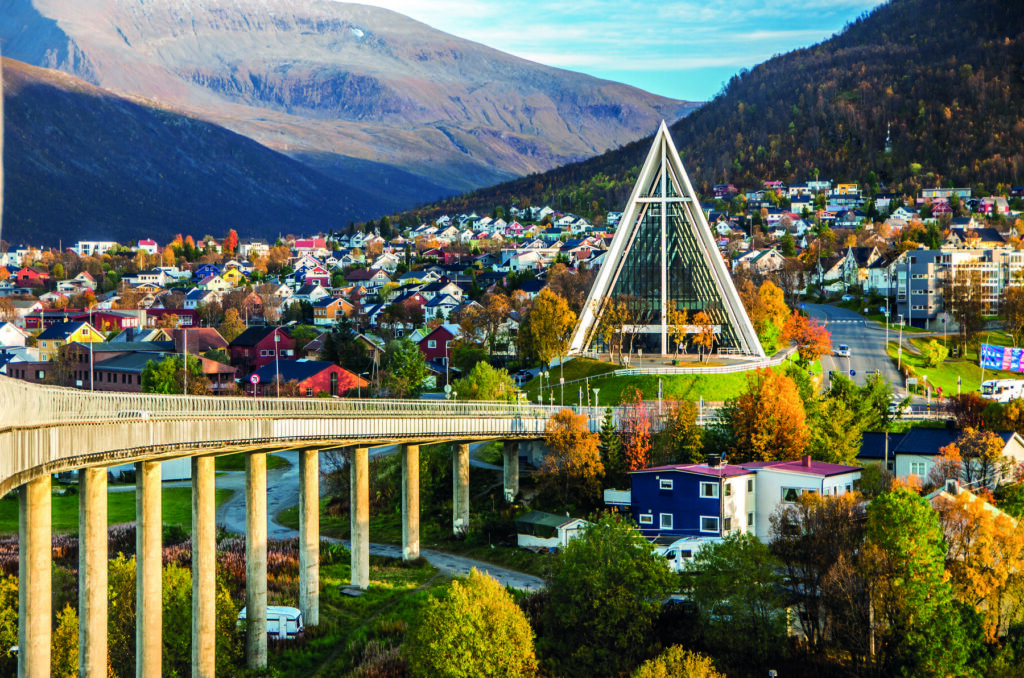
Known as the ‘Gateway to the Arctic’, Tromsø (Romsa in Sámi) is one of the undisputed highlights of Norwegian Lapland, even if you are not lucky enough to get a glimpse of the lights during you stay. Although geographically well out on a limb, it is worth making a special effort to get there to enjoy some rare urban sophistication, the likes of which you won’t find for miles around. Once known, quite ridiculously, as the Paris of the North, Tromsø can nevertheless boast a sophisticated café and restaurant culture, top hotels and several big-name stores; it also has a couple of superb museums which will no doubt whet your appetite to learn more about the Arctic and maybe even to go there.
In the town centre, the main sight is the Tromsø Cathedral, built in 1861 in Gothic Revival style, which dominates the surrounding streets from its imposing position in Stortorget off Kirkegata; for what it’s worth, this is the northernmost Protestant cathedral in the world and the only one in Norway made of wood.
Enjoying a prime location on the harbour front, Tromsø’s Polarmuseet is housed in a former customs warehouse dating from 1830 and contains some of the most fascinating exhibits you will find in Lapland. It is fitting that Tromsø has an entire museum dedicated to its links with the Arctic, since the town owes much of its prosperity today to the hunters and trappers who based themselves here during the first half of the 19th century.
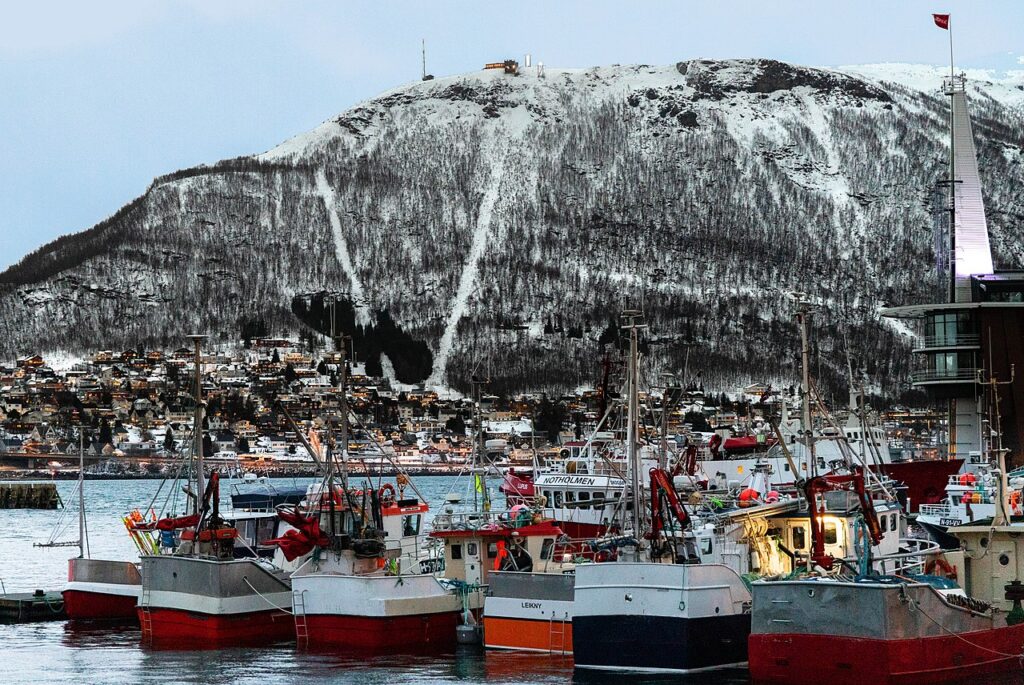
Consider these sights alongside the town’s wide range of bars and restaurants and you’ll have plenty to keep you occupied when you’re not hunting for the lights.
Sweden
Norway’s high prices are legendary and you may decide you’re better off in Sweden or Finland where everything is significantly cheaper.
Abisko
Thanks to its envious position as the driest place in the whole of Sweden, Abisko is not only the place to work on your tan during the summer when the sun never seems to stop shining, but it is the place of choice in winter to see the northern lights when, similarly, the sky here is often free of cloud, a prerequisite for observing the phenomenon.
Abisko is also one of the few places in Lapland that is properly geared up to seeing the northern lights, thanks to the designated viewing site, known as the Aurora Sky Station.
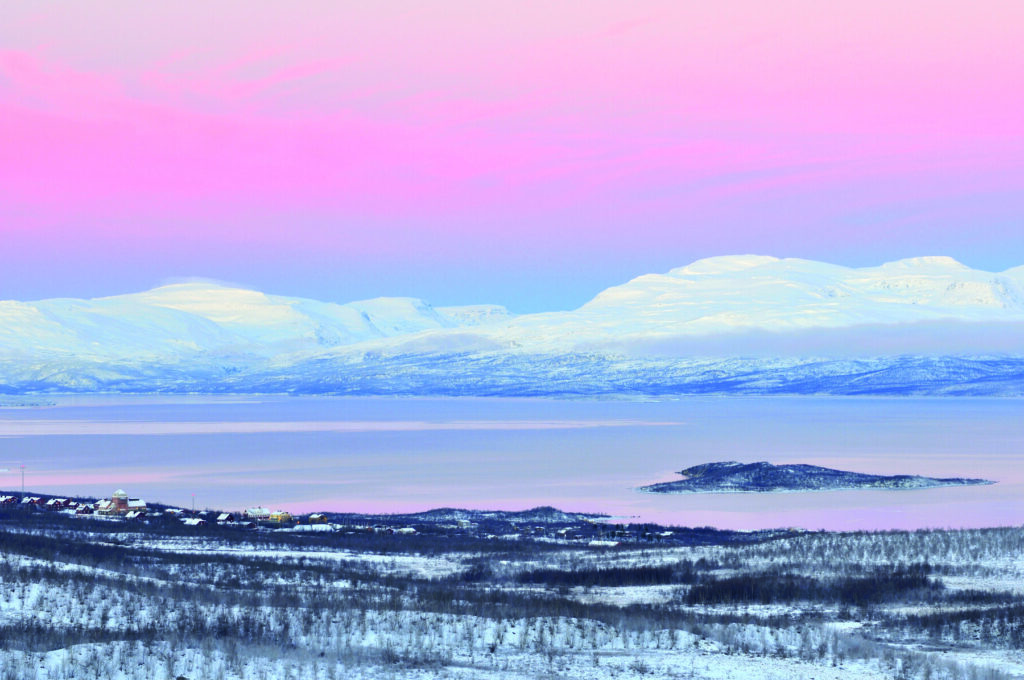
Home to a scientific exhibition about the northern lights and containing all sorts of information about how to measure and even hear the lights, such as audio amplifiers to listen to electromagnetic oscillations in the atmosphere, which often sound like a series of whistles, hisses and clicks, the Aurora Sky Station is a must-visit. The station, complete with a lookout tower, is open in connection with special tours to observe the aurora; tours include a return trip on the chairlift up Nuolja Mountain with warm clothing provided, a welcome drink and a short explanation about the aurora in layman’s terms; advance bookings are essential as the number of tickets is limited.
It’s worth nothing, though, that tours are cancelled if it’s too windy or if the temperature at the summit or the base station falls below –22 ̊C, which makes operation of the chairlift too dangerous. In these cases, dinner is served at the Turiststation, instead, and there will be a walking tour to see the lights followed by an aurora film in the Naturum.
Icehotel
Another option for seeing the northern lights in Sweden (if your pocket can face it) is Icehotel at Jukkasjärvi. From Japan to Britain, the US to Italy, mention the name to any savvy traveller and everyone’s heard about it, and, more often than not, wants to come here. Proof, if ever it was needed, that the man behind the project, Yngve Bergqvist, a southern Swede who moved to Swedish Lapland over 30 years ago, struck gold.
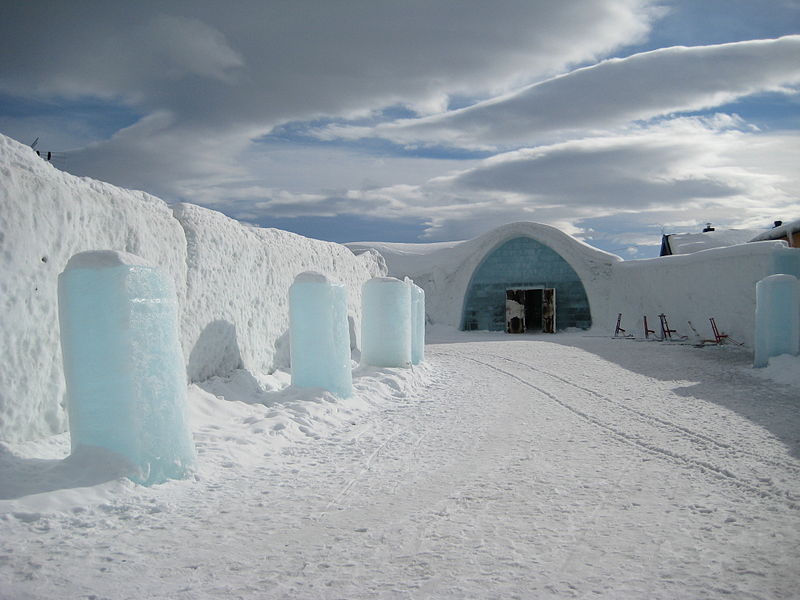
In late October each year, work begins in earnest on the (re)construction of Icehotel. Using blocks of ice hewn from the Torne River, which flows through Jukkasjärvi, artists and sculptors from across the world slowly give shape to thenew structure, which will consume around 1,000 tonnes of ice and 30,000 tonnes of ‘snice’, as Icehotel calls it, a combination of snow and ice which helps strengthen the structure.
Whether you stay here or not, if you are in Lapland during the winter season, you should make every effort to get here because Icehotel really is an amazing sight. Although the actual details of the design and interior decoration vary from year to year, the overall shape of the hotel remains the same: one long arched corridor, naturally lit at either end by giant ice windows, forms the main walkway, from which other corridors then branch off to the left and right leading to the bedrooms and suites. Intricately carved ice sculptures adorn the interior seemingly at every turn and only add to the overall sense of amazement most visitors feel. Beside the main entrance, there’s the Ice chapel, a smaller arched igloo, replete with ice pews and cross, which has become an inordinately popular place to tie the knot.
Finland
Rovaniemi
If you believe the tourist office hype, Rovaniemi is the capital of Lapland and a great choice for those seeking out its iconic green lights, providing you’re happy, that is, to join the hordes of other visitors in search of the very same thing.
Over the years, the Finnish tourist board has become exceptionally adept at linking Rovaniemi and its location on the Arctic Circle with Lapland and Santa Claus in the popular psyche, with the result that Rovaniemi receives the lion’s share of winter tourists to the whole of Lapland.
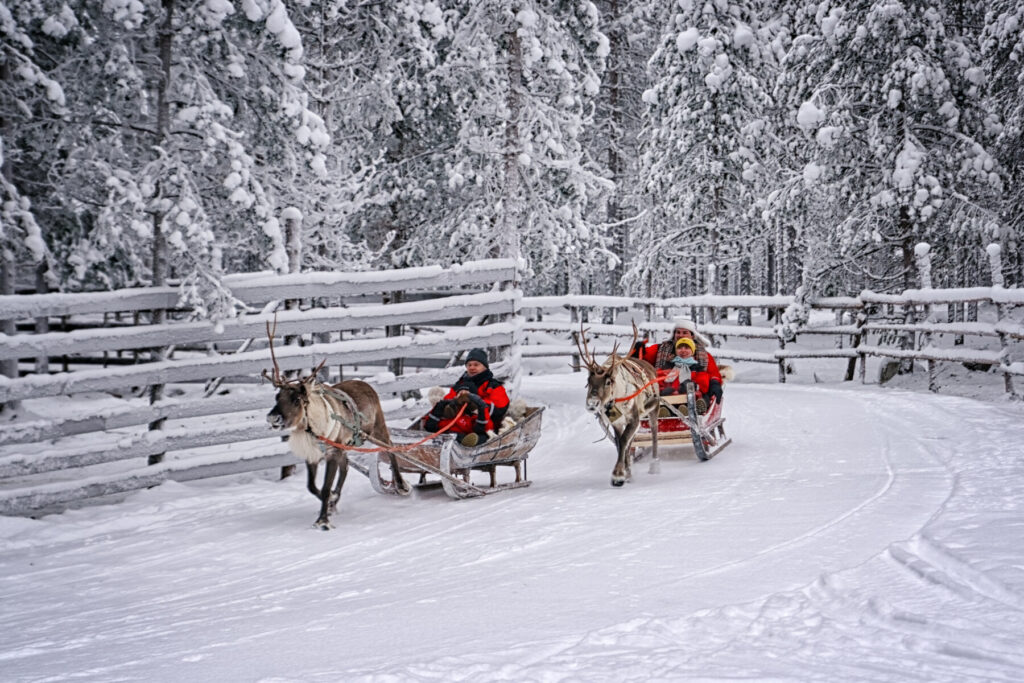
Rovaniemi may well be the capital of Lappi province, but it couldn’t be more different from the rest of Lapland if it tried. Home to the world’s northernmost McDonald’s, a H&M store selling the latest European fashions and a town centre square named after the local hard-rock group Lordi, who won the Eurovision Song Contest for Finland in 2006, Rovaniemi is certainly different. Forget any notion of jetting straight into the heart of Lapland and snapping photographs of Sámi in traditional dress leading their reindeer; instead, you are more likely to be snapped by the speed cameras that line the road out to the Arctic Circle.
Located smack bang on the Arctic Circle, an imaginary line drawn around the globe at latitude 66° 32’ 35”N, the Santa Claus Village is Rovaniemi’s biggest draw.
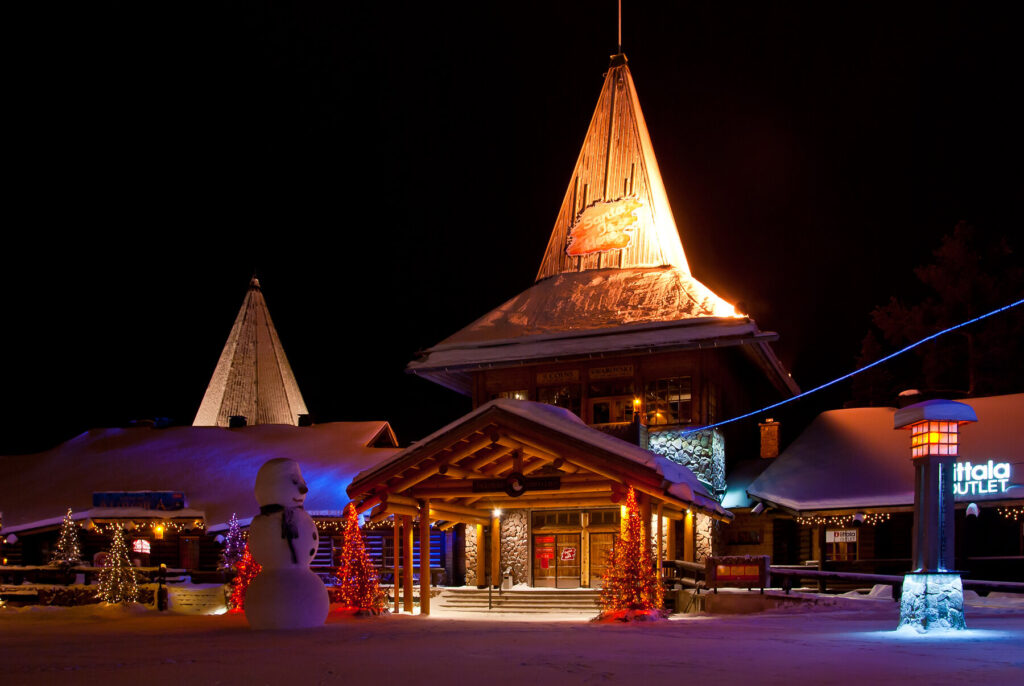
Home to reindeer enclosures, a Santa Claus post office and a fan static Christmas exhibition, there is plenty of festive fun to be had when you’re not on the hunt for the northern lights.
Luosto
Titchy Luosto is the perfect antidote to the full-on winter tourism that drives places like Rovaniemi. If you’re looking for a modest, compact little village, where everything is within easy walking distance, it’s hard to go wrong – Luosto consists of just two hotels, a couple of activities companies and very little else. Thanks to its size, there is very little light pollution in Luosto which means the northern lights are more readily seen. Indeed, the hotels operate a texting service to your mobile phone if the aurora is spotted.
Luosto is located at the foot of Ukko-Luosto fell (514m) where two main lifts will whisk you up to the summit for a handful of slopes ideal for visitors hoping to engage in a spot of skiing during their trip.
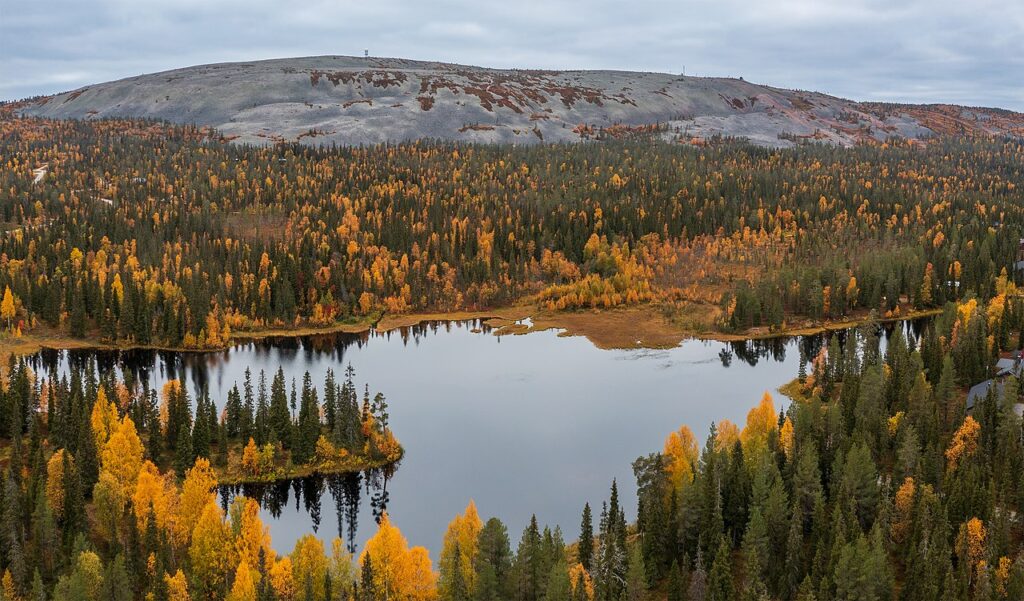
Another unusual option is a trip to Luosto’s amethyst mine, 5km southeast of the village and the only one in Europe where the precious stones are mined by hand using shovels and pickaxes; this method keeps the mine sustainable and also gets around the fact that the mine is located within the national park. A visit to the mine, at the top of Lampivaara hill, includes an explanation about the geology of the area as well as a chance to dig for amethysts yourself – if you find one, and most people do, you can take it away for free, providing that it will fit in the palm of your hand; any larger and you must negotiate a price with the mine if you want to keep it. In winter, the most fun way to reach the mine is by snowcat and carriage. Departures are from opposite the Luostotunturi hotel, generally at 11.10, cost €79 per person and the trip takes about 30 minutes to reach the mine.
Torassieppi
Around 17km east of Muonio, the reindeer and husky farm of Torassieppi is a truly unique destination. Dominating the minuscule village of the same name, The farm dates back to 1847 and has been run by the same family ever since, though there is no longer any meat production. The farm offers a guided visit plus a 15km husky safari for €160, as well as a number of reindeer safaris: a 1-hour night-time ride in search of the northern lights costs €130. It’s also possible to visit the reindeer farm without doing a safari: €25 buys you a guided tour plus a visit to the original 19th-century manor house – one of the few timber buildings in Finnish Lapland which escaped the Germans’s scorched-earth policy, and a visit to the modest museum which contains a few worthy tools, implements and other agricultural odds and ends originally used on the farm.
More information
For more information on Lapland, check out James Proctor’s guide:
